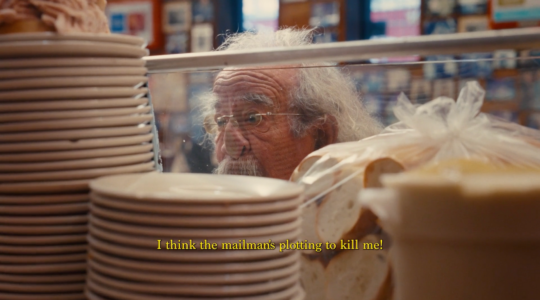Among the myriad ways in which Jews became Americans in the 20th century, one of the most felicitous was their involvement in the creation of popular music. The overwhelming presence of Jewish-Americans in the pages of the Great American Songbook is proverbial. Even a gilt-edged WASP like Cole Porter prided himself on “writing Jewish.”
And that presence continued from the days of Tin Pan Alley into the rise of rock and roll. The Brill Building gang alone practically constitute a minyan — Neil Diamond, Gerry Goffin, Carole King, Barry Mann, Cynthia Weill and so on.
The key word in all this is “popular.” Like other forms of show business, the pop music trade became a way for Jews to integrate themselves into a society that viewed them with suspicion and, frequently, hostility. The price of admission was a certain deracination. The most famous example, of course, was Irving Berlin who wrote “Easter Parade,” “White Christmas” and a significant number of rather unpleasant ethnic “comedy” numbers.
The most extreme example, arguably, is Phil Spector. On the evidence of “The Agony and Ecstasy of Phil Spector,” a new documentary film by Vikram Jayanti that opens on June 30, Spector chose to estrange himself not only from mainstream American society, but also from mainstream Jewish-American society and, finally, from society itself. The result is a life at once singular and yet typical, with an apparent ending both bizarre and pathetic.
Spector, now 69, was a boy wonder who wrote, produced and performed a huge No. 1 hit with his very first recording, “To Know Him Is to Love Him” when he was barely 18. Famously, the title was taken from the epitaph on his father’s headstone, and the song itself, as he tells Jayanti, is not the innocent ode to puppy love that most listeners assumed, but a love song to Spector’s dead dad, who committed suicide when the boy was about 5. As Spector says in a piece of archive footage from 1977, “When your father blows his head open, it’s not funny.”
Jayanti uses the music master’s first trial for the murder of fading B-movie actress Lana Clarkson as one of his film’s structuring armatures, and presents it in parallel with an unprecedented and lengthy interview with Spector filmed at the same time. (He was ultimately convicted of the 2003 murder last year and sentenced to 19 years in prison.) Almost from the very beginning of “Agony,” Spector asserts his loneliness, his anger and resentment. He was the kid who was ostracized in high school because his family was poor; he was shunned by his classmates, “wealthy, middle-class white Jewish kids who were very stuck up.” He was the loner who used “girl groups” interchangeably in a string of brilliant hits that owed their success to his hook-laden writing and distinctive “wall of sound” production design. He reckons that he “was treated with contempt,” and never given the acclaim and respect that naturally came “to Berlin and Gershwin.”
I think it is not an accident that Spector invokes Berlin and Gershwin as two exemplars of the acceptance accorded to other important figures in 20th-century pop. They aren’t just famous Jews. They are the alpha and omega of assimilated Jewish-American musicians, one the paterfamilias who became synonymous with America itself and the other the doomed boy genius who cracked the concert hall’s glass ceiling, melding high and low art in a quicksilver blend.
“I always wanted to be accepted by the Establishment,” Spector says. “[But] I was a loner and treated with contempt. … I think black Americans did better … because [their] rage came out. I think that rage comes out when you’re treated with disrespect.”
Therein lies the cultural nexus that made Spector’s work stand out for so long — the same Jewish-American/African-American connection that underpinned the vaulting success of Benny Goodman and Artie Shaw, the connection to which George Gershwin aspired and that Berlin instinctively achieved.
That connection takes a remarkably expressive form in Spector’s best work, in which he walks on a razor’s edge between kitsch and trash, and his penchant for bombast and excess transform and elevate his three-minute symphonies of teen angst into the realm of great art.
And the result is, I submit, Jewish art in much the same way that the work of Woody Allen and Larry David is Jewish art. It is rooted in the narcissism and solipsism of a self-created loner; it is the product, as Spector himself says with unblinking candor, of the anger of the rejected. What is the resentful teenager behind a great song like “He’s a Rebel,” if not a distillation of Spector’s own high-school hurts?
It’s all there, right out in the open in “Agony.” The film is an uneasy mix of interview and archival footage, with slick, rather too glib juxtapositions of Spector’s greatest musical work with his strange physical presence in court, where he is pasty-faced and somnolent, with only a severe tremor from his hands indicating he is even awake. Yet for all its shortcomings, “The Agony and the Ecstasy of Phil Spector” is a compelling portrait of a Jewish-American artist foundering on the shoals of his own self-willed isolation, which is itself compounded by social realities that have wounded better people than Spector.
Support the New York Jewish Week
Our nonprofit newsroom depends on readers like you. Make a donation now to support independent Jewish journalism in New York.
“The Agony and the Ecstasy of Phil Spector,” directed by Vikram Jayanti, opens on Wednesday, June 30 for a two-week run at Film Forum (209 West Houston St.) For information, phone 212-0727-8110 or go to www.filmforum.org.
|
Signup for our weekly email newsletter here. Check out the Jewish Week’s Facebook page and become a fan! And follow the Jewish Week on Twitter: start here. |
The New York Jewish Week brings you the stories behind the headlines, keeping you connected to Jewish life in New York. Help sustain the reporting you trust by donating today.




